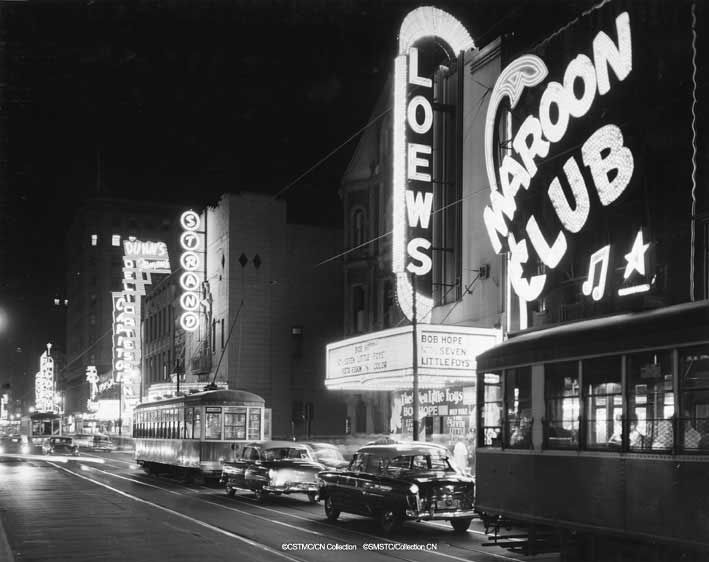You can’t seriously believe that opinions like these—replete with weasel word phrases such as: “by and large†these are “statements of factâ€
Are they, or are they not, statements of fact? Was there anything I characterized in this kind of signage that was incorrect? Even Honest Ed's sign had its share of burn-out bulbs, and this was a man who took his public image seriously. So if not, then what are you even taking issue with?
your opinions are “entirely objective because they're observations on reality†are going to pass muster here.
They're objective inasmuch as anyone else can see them and agree that they exist. Subjectivity enters into the issue only on the matter of how you care, or don't care, to spin those realities. To me, and people like me, they don't represent any "immeasurable" loss to the city, although I don't dispute that they can and do to you personally. That's a different matter.
There's a propensity, not absolute but chronic, on Urban Toronto to take as an ipse dixit that everything that previously existed in Toronto is perforce superior in nearly every aspect to whatever replaced it. Sometimes it was, sometimes it wasn't. It's not out of line to step up once in a while and offer the opinion that sometimes it wasn't.
In any case, you’ve entirely missed the point, which is that these signs at their best were a popular art form, one that enlivened the streetscape,
No, I haven't missed your point. I get that you feel that way about them. My point simply was it isn't universal, which is why I began be saying it was subjective in the first place.
and that the eclipse of commercial signage, as both an art form and a form of industrial design, has left us with a more impoverished look to our streets.
Where you would say "impoverished", others would say "uncluttered". I don't feel impoverished because downtown no longer has the air of some town in West Virginia that's been down on its luck since the mine closed. But again, that's subjective, I admit it. Some people are sorry it's gone; others aren't, and I was voicing that opinion. And I did so because one of the thoughts I had was "thank God the city doesn't look like that anymore", which was completely countered by what you said. Fair enough.
Were there were examples of neglect? Were they signs and marquees that “had bulbs and even entire sections burnt out†Yes, certainly. So what?
So this is what you're eulogizing, and what I'm saying is not necessarily lamented. If you can admit it was so, why can't you admit it's possible to be glad to see the back of it?
Firstly, contrary to your completely prejudicial description of these signs as “rusting junk no one every looked afterâ€, there were plenty of examples of well maintained neon signage. You’ve cited the same GOOF example twice—are there any other instances of rusting junk you can remember?
I don't have a litany of offences. I'm speaking from my general impressions, just as you were in praising them. Which, of course, is equally prejudicial, just the other side of the coin.
Secondly, how does the neglect of some property owners translate into a complete discrediting of the form?
No, of course not. But why do imagine your personal liking for the form necessarily obliges the rest of us? My experience of them is that they give parts of town where they exist a run-down, economically-depressed, "past it" look that I don't regret to see consigned, for the most part, to the past. I'm not demanding you agree; I'm saying other people have different opinions on the matter, just like they do on expressways, waterfronts, condos, and other aspects of the urban environment.
Are you seriously suggesting that the abolition of these kinds of signs has led to a less ‘shabby’ look to the city?
Yes. When I look at those two views of the same street, there's no question in my mind that I prefer the now shot to the then.
I don’t even know what the word ‘shabby’ means.
shabby
• adjective (shabbier, shabbiest) 1 worn out or dilapidated. 2 dressed in old or worn clothes. 3 mean and unfair: a shabby trick.
— DERIVATIVES shabbily adverb shabbiness noun.
— ORIGIN from dialect shab "scab", from Germanic.
New English Dictionary, Oxford University (a.k.a. "OED")
All I know is that commercial signage sucks big time—and it didn’t used to.
I can't, and don't, claim it's vastly improved these days; it is, however, less visually and physically intrusive than the signage you favour, and, for the moment, less suggestive of economic decline.
having seen these changes first hand, I simply don’t agree with you.
Yes, THAT was pretty much my point when I brought this up and suggested these things are "subjective" in the first place. Did we need to go through all this just for you to reach the same conclusion and call a ceasefire?













